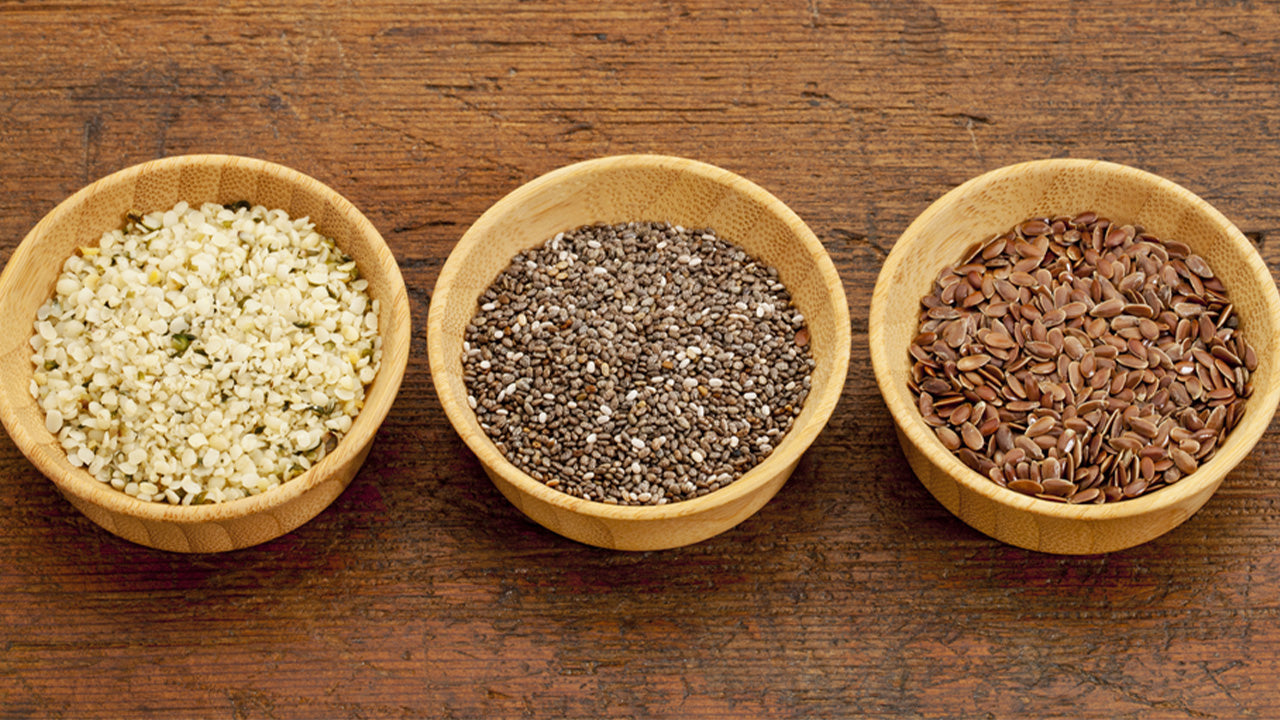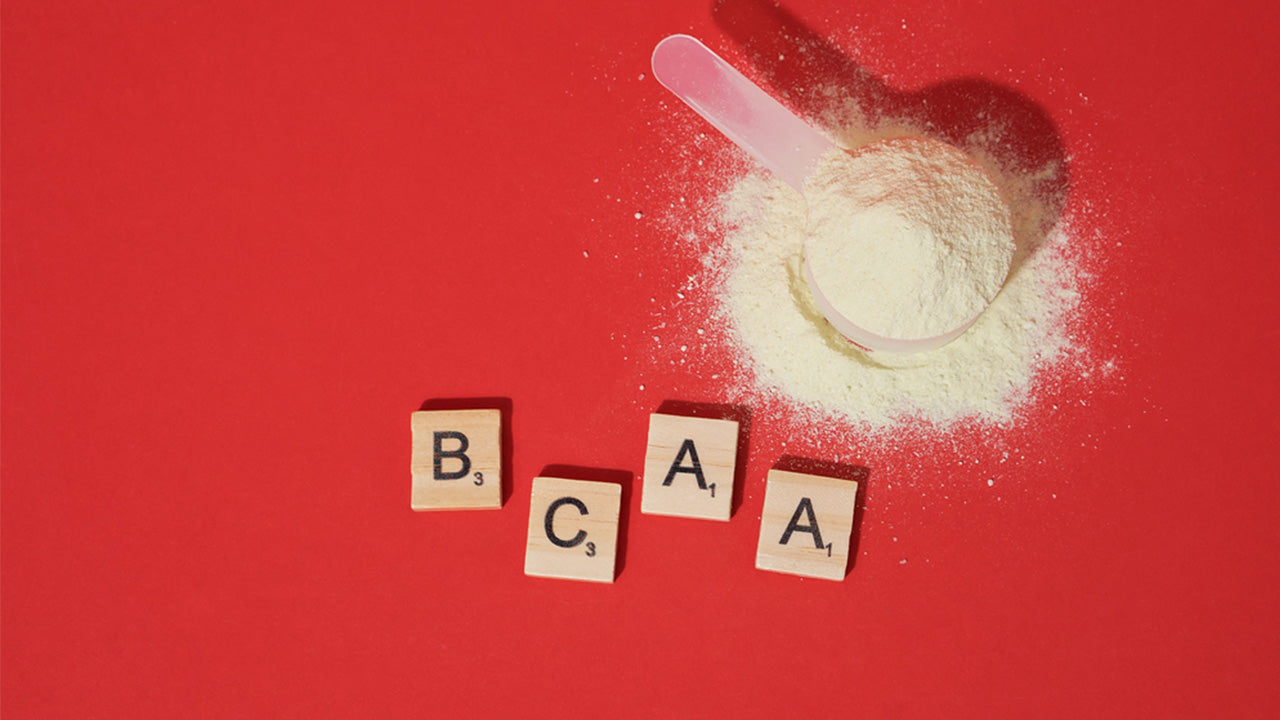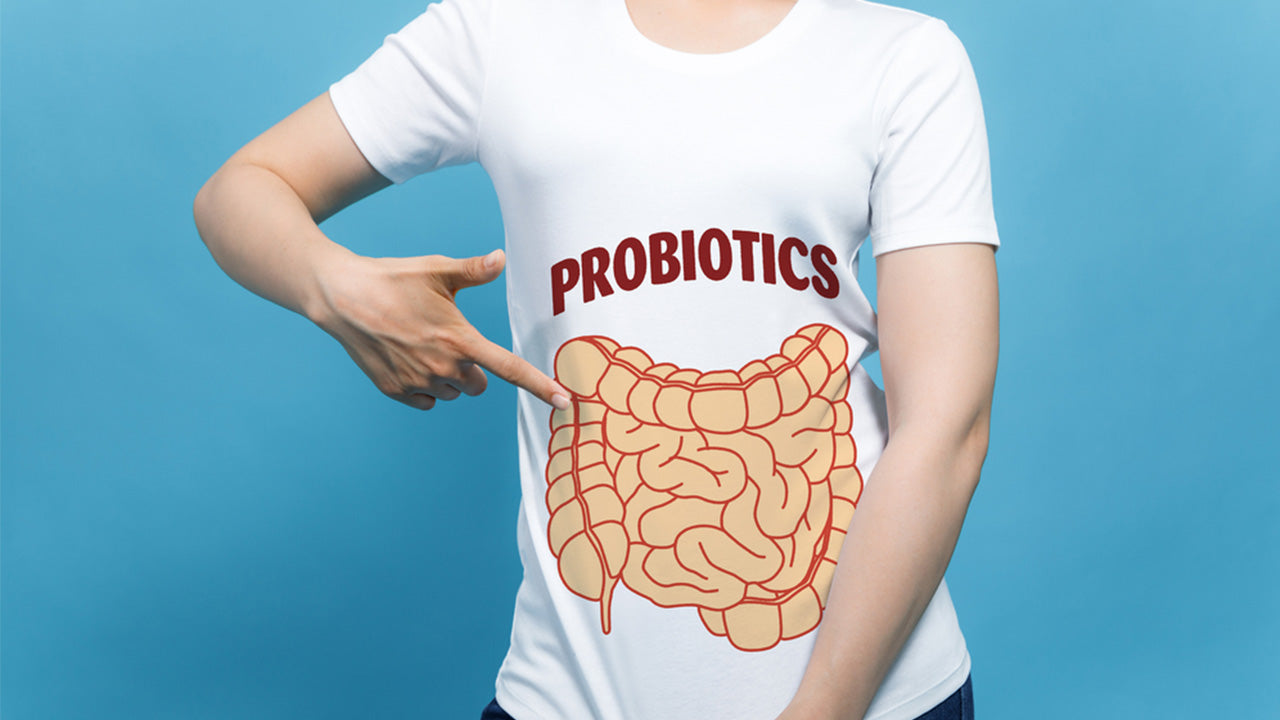Chia vs. Flax vs. Hemp: Which Super Seed Is Right for You?
 By: by Amino Science
By: by Amino Science

In the world of super seeds there are three major players: chia seeds, flax seeds, and hemp seeds. What superpowers do they share and how are they different? Which is best for you? That all depends on what you’re looking for...more fiber, protein, omega 3s? Check out these chia vs. flax vs. hemp seed facts before you put your money down!
Chia, Flax and Hemp Seed Similarities
Before we delve into their differences, let’s pay our respects to the similarities between chia seeds, flax seeds, and hemp seeds.
These seeds are top vegan and vegetarian protein sources, high in fiber, phytochemicals, and antioxidants and rightly called superfoods. They’re also the go-to plant sources of essential fatty acids, particularly omega-3s.
Seeds and Omega-3s: A Refresher
The essential fatty acids are deemed “essential” because they cannot be made by the human body and can only be sourced through dietary means. There are two of them:
- The omega-6 fatty acid linoleic acid (LA)
- The omega-3 fatty acid α-linolenic acid (ALA)
These essential omega-6 and omega-3 fatty acids provide structure to our cell membranes, give us energy, and act as precursors to other compounds in the body that help lower blood pressure and cholesterol levels and keep inflammation in check.
You may have come across some misguided information that paints omega-6 as a villain. On the contrary, omega-6 fats are vital to health, and according to the American Heart Association and Harvard Medical School, you do not need to cut back on your consumption of omega-6s sourced from healthy foods such as tofu, walnuts, and peanut butter.
On average, however, we consume far more omega-6 fats than we do omega-3 fats, in part due to an overzealous consumption of health-compromising vegetable oils such as corn oil and soybean oil. Health experts recommend upping your intake of omega-3s to bring the two essential fatty acids back into balance to a preferred ratio of 4:1, omega-6:omega-3.
Eating chia, flax, and hemp seeds can help you increase omega-3s in your diet because they are all a good source of alpha-linolenic acid (ALA).
Which brings us to another question about omega-3s that pops up frequently: isn’t it better to consume eicosapentaenoic acid (EPA) and docosahexaenoic acid (DHA) from fatty fish and eggs to meet your omega-3 needs?
While it’s true that most of the benefits cited for omega-3s—heart health, diabetes management, anti-inflammation, osteoporosis prevention—are courtesy of DHA and EPA, a review in the American Journal of Clinical Nutrition shows that ALA offers up benefit in its own right. ALA can help:
- Decrease the hardening of plague
- Lower cholesterol
- Support strong artery walls
- Protect against blood clots
- Prevent arrhythmia
- Reduce inflammation
ALA certainly isn’t a substitute for the other omega-3s, but minimal amounts of ALA can also be converted to DHA and EPA in the body.
If it’s ALA you’re after, flax seeds are your best bet, as they have more ALA than hemp and chia seeds and in the best ratio at 0.3:1 omega-6:omega-3. Let’s see how else these mighty seeds compare!
Chia Seeds
Percent Daily Value for 1 ounce (28 grams); approximately 2 tablespoons:
- 9% Protein
- 42% Fiber
- 13% Fat
Chia seeds are the highest in soluble fiber and insoluble fiber and get bonus points for digestibility. Unlike flax seeds, which have to be ground up in order to be digested, chia seeds are absorbed and digested in their whole form. The high fiber content has been shown to help:
- Control appetite
- Promote weight loss
- Lower blood pressure
- Calm inflammation
- Keep blood sugar levels stable
These tiny but mighty seeds are also the highest in calcium and boast an abundance of magnesium, phosphorus, potassium, selenium, and copper.
Amino Acid Profile of Chia Seeds
Made of 19% protein, chia seeds have a much higher protein content than traditional grains like rice and wheat. Among the seeds, chia might not be highest in amount of protein—that honor goes to hemp seeds—but it is a complete protein, which means it contains all 9 of the essential amino acids, as well as 8 nonessential amino acids, with glutamine being the highest and histidine being the lowest.
Check out the amino acid composition of chia seeds in grams of protein below.

Flax Seeds
Percent Daily Value for 1 ounce (28 grams); approximately 2 tablespoons:
- 10% Protein
- 31% Fiber
- 18 % Fat
We’ve already crowned flax seeds the victor for ALA, but it’s also notably high in other nutrients, including vitamin E, calcium, magnesium, manganese, phosphorus, and copper. Flax seeds are also high in lignans, a plant polyphenol that has estrogenic and antioxidant properties. There is evidence that lignans can inhibit tumor growth and reduce markers of breast cancer in premenopausal women.
As noted earlier, whole flax seeds cannot be absorbed and digested. Either grind the seeds yourself, purchase ground flax seeds, or opt for flaxseed oil instead.
Amino Acid Profile of Flax Seeds
Flax seeds contain slightly more protein than chia seeds do, but they aren’t considered a complete protein as they are low in the essential amino acid lysine. They are high in conditionally essential amino acids though, including arginine, aspartic acid, and glutamic acid.
Check out the amino acid composition of flax seeds in grams of protein below.

Hemp Seeds
Percent Daily Value for 1 ounce (28 grams); approximately 2 tablespoons:
- 18% Protein
- 8% Fiber
- 19 % Fat
Hemp seeds hail from the same plant species as marijuana but are a different variety and contain a minimal amount of THC (less than 0.3%), the psychoactive compound responsible for marijuana’s side effects. Once processed and cleaned that content is negligible.
Of the three seeds, hemp is highest in protein and zinc, and has plentiful amounts of iron, magnesium, phosphorus, manganese, and copper.
Hemps seeds are unique in a couple of ways. First, hemp is high in stearidonic acid (SPA), a fatty acid that helps convert ALA into EPA and DHA. It’s presence in hemp seeds might, theoretically at least, boost the conversion of ALA into anti-inflammatory EPA and DHA.
Second, it is rich in the anti-inflammatory omega-6 gamma-linolenic acid (GLA), which is not found in very many foods beyond hemp seeds, black currant seed oil, primrose seed oil, and borage seed oil.
Hemp seeds have all the heart healthy benefits of chia seeds and flax seeds, helping to lower cholesterol and other biomarkers of heart health, and, like chia seeds, score high on digestibility. In fact, hemp seeds have fewer anti-nutrients like phytic acid, condensed tannins, and trypsin inhibitors, so they are highly bioavailable.
Amino Acid Profile of Hemp Seeds
At 25% protein and with 18 amino acids in total, hemp seeds are considered a complete protein; however, research varies as to the precise amount of each amino. Some studies show a similar amino acid profile as egg whites, while others indicate hemp seeds may be low in the amino acid lysine, which indicates an inferior quality protein compared to animal-based protein sources.
The high concentration of arginine, glutamic acid, methionine, and cysteine aren’t debatable, and make for an impressive protein profile.
Check out the amino acid composition of hemp seeds in grams of protein below.

Chia vs. Flax vs. Hemp: Take Your Pick
With an overlap of nutrients and slight variations in protein and fiber content, any of these three super seeds make a great addition to your diet. It really just depends on your preferred nutritional benefits, which can vary day by day.
Of course, there’s also the taste factor.
Chia seeds can be eaten whole and raw for a mildly nutty flavor that lends itself to smoothies. Or soaked in water, where they taste similar to tapioca pearls.
Flax seeds taste richer and nuttier, and do well added to hot and cold breakfast cereals and oatmeal.
Hemp seeds taste a bit like sunflower seeds with a moderate nutty flavor. You can add them to smoothies, yogurt, or cereals, and even use them to make hemp milk at home.
So what will it be? Chia, flax, hemp, or all three of these miraculous seeds!
If It's EAAs You're After, Try This!
If you're seed shopping to increase your intake of protein, then we recommend going straight to the source—free amino acids!
As part of a balanced supplement, free essential amino acids can be used for immediate energy. They jump in to produce neurotransmitters and activate muscle protein synthesis, and have even been shown to boost the immune system and calm an overactive inflammation response.
All Amino Co EAA blends are free from gluten, GMOs, additives and artificial everything. We have several different formulations to support your health goals and promote overall wellness. You can check them out here!

Up to 25% off Amino
Shop NowTAGS: anti-aging benefits conditions food injury natural cures surgery
Join the Community
Comments (0)
Most Craveable Recipes








 833-264-6620
833-264-6620



















